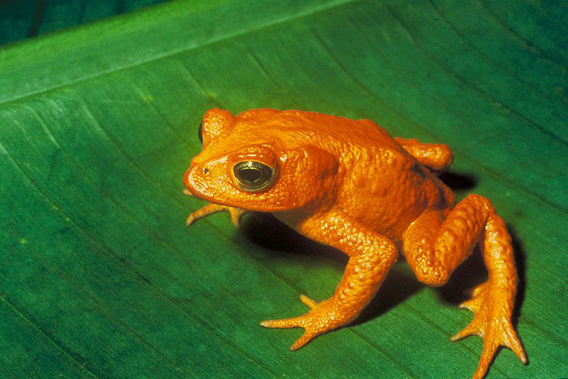
The golden toad (Bufo periglenes) is one of well-over a hundred frogs that are believed to have gone extinct over the past few decades. Photo by: US Fish and Wildlife Service.
A new paper in Nature negating how scientists estimate extinction rates has struck a nerve across the scientific community. The new paper clearly states that a mass extinction crisis is underway, however it argues that due to an incorrect method of determining extinction rates the crisis isn’t as severe as has been reported. But other experts in the field contacted disagree, telling mongabay.com that the new the paper is ‘plain wrong’. In fact, a number of well-known researchers are currently drafting a response to the day-old, but controversial paper.
Estimating extinction rates has always been full of uncertainty. Given the lack of knowledge over how many species survive on Earth—is it 5 million or 100 million?—it is equally difficult to know how quickly species (the majority of which haven’t even been described) vanish in the face of habitat loss and other impacts. Scientists have predicted that the current rate of extinction loss is between 100 to 1,000 times above the average background rate of extinctions, but the new paper says such predications are overestimations.
Paper adds controversy
The new paper, by Fangliang He and Stephen Hubbell, has aggravated the debate over just how many species are vanishing. He and Hubbell argue that the major way in which researchers estimate species extinction—the ‘species-area relationship’—has overestimated extinction rates by up to 160 percent.
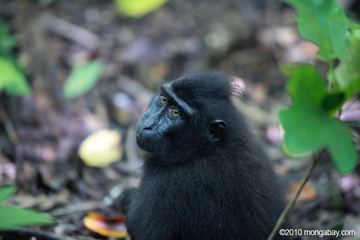 Native to the Indonesian island of Sulawesi, the black-crested macaque (Macaca nigra) is classified by the IUCN Red List as Critically Endangered. Photo by: Rhett A. Butler. |
Hubbell, a tropical forest ecologist and a scientist at the Smithsonian Tropical Research Institute (STRI), says in a press release that although it’s true “we are losing habitat faster than at any time over the last 65 million years” the method researchers have used to estimate extinctions is “erroneous”.
“The good news is that we are not in quite as serious trouble right now as people had thought, but that is no reason for complacency. I don’t want this research to be misconstrued as saying we don’t have anything to worry about when nothing is further from the truth,” Hubbell says, obviously wanting to make certain the media doesn’t turn this into a denial of the mass extinction crisis, which experts agree is currently occurring or very near on the horizon.
But according to Hubbell and He, using species-area relationship does not come up with an accurate answer as to the rate of extinction. Species-area relationship estimates loss of species by looking at the loss of habitat. Surveying how many species are in a given area, researchers than extrapolate how many species are in the wider ecosystem. Working backwards, researchers may estimate the number of species that go extinct as the habitat is destroyed. For example if 90% of a forest is clearcut, the species-area relationship predicts about half the species in the ecosystem would vanish. These species may not vanish right away, small populations may still persist, but ecologists argue these populations suffer from ‘extinction debt’. In other words, they are doomed to extinction over time, what some researchers describe as the living dead’. According to research it can take species many generations to go extinct even after a population tipping-point has been reached.
But, the paper argues that this mathematical method suffers from overestimating extinctions because most species still survive, albeit in significantly reduced populations, in the habitat remaining.
“We show that this surrogate measure is fundamentally flawed,” says Hubbell, “you can’t just turn [the species-area relationship] around to calculate how many species should be left when the area is reduced; the area you need to sample to first locate a species is always less than the area you have to sample to eliminate the last member of the species.”
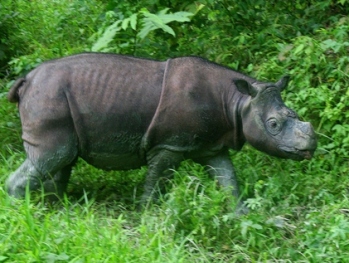 A Sumatran rhino in captivity in Borneo. The Sumatran rhino is on the edge of extinction with only 200 adult individuals estimated to survive. Photo by: Jeremy Hance. |
Hubbell says he agrees that ‘extinction debt’ still exists, but that it is not as prevalent as has been estimated. Instead, the paper argues that researchers should predict species extinction related to habitat loss only when an entire species’ habitat is gone (i.e. the species is endemic to the destroyed area).
As an example of where the species-area relationship has overblown predictions, the study points to forecasts in the early 1980s that half of the species on Earth would be extinct by 2000. However, that has not occurred among known species.
“Nothing like that has happened,” Hubbell says.
Muddying the waters, of course, is the fact that while habitat loss is the greatest threat to species worldwide, other impacts, such as hunting and poaching, overconsumption, pollution, disease, and invasive species also imperil species. In addition, climate change could become a major in causing future extinctions, especially in the face of tiny populations surviving in habitat fragments.
Complicating the picture even further is conservation efforts of known species. Some species should have gone extinct, but continue to hang-on due largely to long-term and active conservation efforts. However, cryptic species—those not yet known to researchers—don’t have such a luxury.
Response
The response to Hubbell and He’s paper from other experts in the field has been rapid and negative.
 The Sumatran orangutan (Pongo abelii) is considered Critically Endangered with approximately 7,000 left, representing an 80% decline in 75 years. Photo by: Rhett A. Butler. |
“[The study] is widely inaccurate, not because it is wrong, but because it considers only a very small part of the problem,” Stuart Pimm professor of Conservation Ecology at Duke University told mongabay.com. “The claims in the title are, simply false, and constitute nothing more than arrogant posturing on part of authors who would not have got their paper published had they not seen fit to ignore and misquote an extensive body of literature published in prestigious international journals. ”
Pimm points out that the title of the Hubbell and He’s paper, Species–area relationships always overestimate extinction rates from habitat loss, is undercut immediately by studies that have found that species-area relationship has resulted in correct predictions. For example, Pimm points to a study of his where the species-area relationship correctly predicted the extinction of 4.5 birds in Eastern North America. In fact, four birds have gone extinct, and one (the 0.5) is threatened with extinction.
According to Pimm, the problem lies in the paper’s conflating immediate species extinction after habitat loss with eventual species extinctions over time, in other words it completely ignores the extinction debt, those living dead populations that will wink out in time.
“Imagine destruction that wipes out 95% of the habitat in an area metaphorically ‘overnight’. How many species have disappeared ‘the following morning’? The paper tells you. It is not many, just those wholly restricted to the 95% (and absent from the 5% where they would survive),” Pimm says, agreeing that the initial extinction rate would be low, because it would only affect endemics, i.e. those found only in the habitat destroyed. But in time, says Pimm, extinction rates would worsen even if no additional habitat loss occurs.
 A leatherback sea turtle, also considered Critically Endangered, laying eggs on a beach in Suriname. Photo by Tiffany Roufs |
“The important question is…how many of additional species living lonely lives in their isolated patches (the 5%) would become extinct eventually because their population sizes are too small to be viable?”
Lian Pin Koh, a tropical ecologist at ETH Zurich, agrees with Pimm that the paper’s findings are incorrect. Koh says the authors “are simply barking up the wrong tree” because they have confused how researchers estimate the number of species in an ecosystem and how they estimate extinction rates.
“The basic premise of the He and Hubbell paper is plain wrong,” Koh told mongabay.com, “The species-area relationships they refer to are actually species accumulation curves—the relationship between sample size and number of species encountered. On the other hand, the species-area models that ecologists use to predict species extinctions are a different set of relationships altogether, one that is based on empirical evidence of the relationship between the size of islands and number of species inhabiting those islands.”
In other words, according to Koh, the paper does not take-on the correct model.
Koh and Pimm are apart of a group of experts who are currently drafting a formal response to the Nature paper.
“The paper is a sham,” Pimm continues, “it does not report extinction rates or the numbers of species that are threatened. Despite its posturing, it deals with a different issue.”
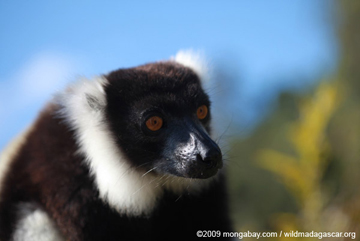 A black-and-white ruffed lemur (Varecia variegata) in Madagascar. Their population has dropped by 80% in 27 years. This species is also listed as Critically Endangered. Photo by: Rhett A. Butler. |
However, Hubbell said in a press release that he has ‘100 percent’ confident in his findings. He sees his paper as ‘good news’ in that it gives humanity more time to prevent a mass extinction crisis. But, at least, in this researchers agree: life on Earth is threatened worldwide.
The evidence for this is undeniable: according to the IUCN Red List, the world authority on species’ threat levels, 41% of the world’s amphibians are threatened with extinction, 33% of cartilaginous fishes, 33% of coral reefs, 25% of mammals, 22% of reptiles, 15% of bony fishes, 14% of sea grasses, and 13% of birds. Even these are likely to be underestimates. Studies have shown that recently discovered species have a higher risk of extinction than species known for centuries. Therefore, cryptic species, those still undiscovered (which outnumber known species) are more likely to be weighted towards threatened rather than thriving.
Whatever the exact rate is at which species are going extinct, a biodiversity crisis is occurring that portends a global extinction not seen since the dinosaurs fell. Though not as important to mainstream media as Arnold Schwarzenegger’s infidelity and low on the list of priorities for world leaders, ecologists—even when they disagree on the details—still agree the world is in the middle of a full-blown crisis.
“The next mass extinction may be upon us or just around the corner,” says Hubbell. “There have been five mass extinctions in the history of the Earth, and we could be entering the sixth mass extinction.”
CITATION: Fangliang He and Stephen P. Hubbell. Species–area relationships always overestimate extinction rates from habitat loss. Nature. Vol. 473. May 19, 2011. doi:10.1038/nature09985.
Related articles
3,000 amphibians, 160 land mammals remain undiscovered—that is if they don’t go extinct first
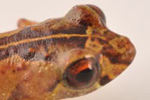
(05/18/2011) Remote little-explored rainforests probably harbor the majority of undiscovered amphibians and land mammals according to a new study in Proceedings of the Royal Society B. The study calculated that it’s likely 33% of the world’s amphibians and 3% of terrestrial mammals still remain unknown. However, the paper also found that these undiscovered species are likely in worse peril of extinction than already-described species.
New method to measure threat of extinction could help conservationists prioritize
(04/07/2011) Researchers have developed a new method to predict how close species are to extinction. Dubbed SAFE (Species Ability to Forestall Extinction) the researchers believe the new tool, published in the Frontiers in Ecology and Environment, should help conservationists select which species to focus on saving and which, perhaps controversially, should be let go.
World’s sixth mass extinction still preventable
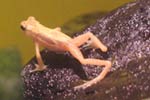
(03/03/2011) So, here’s the good news: a mass extinction, the world’s sixth, is still preventable. But the bad news: if species currently threatened with extinction vanish—even over the next thousand years—homo-sapiens will be the first single species responsible for a mass extinction. Comparing today’s current extinction crisis with the big five that occurred in the past, a new study in Nature finds that while the situation is dire, the choice is ultimately up to humanity. “If you look only at the critically endangered mammals—those where the risk of extinction is at least 50 percent within three of their generations—and assume that their time will run out, and they will be extinct in 1,000 years, that puts us clearly outside any range of normal, and tells us that we are moving into the mass extinction realm,” explains lead author Anthony D. Barnosky, UC Berkeley professor of integrative biology.
Worldwide search for ‘lost frogs’ ends with 4% success, but some surprises

(02/16/2011) Last August, a group of conservation agencies launched the Search for Lost Frogs, which employed 126 researchers to scour 21 countries for 100 amphibian species, some of which have not been seen for decades. After five months, expeditions found 4 amphibians out of the 100 targets, highlighting the likelihood that most of the remaining species are in fact extinct; however the global expedition also uncovered some happy surprises. Amphibians have been devastated over the last few decades; highly sensitive to environmental impacts, species have been hard hit by deforestation, habitat loss, pollution, agricultural chemicals, overexploitation for food, climate change, and a devastating fungal disease, chytridiomycosis. Researchers say that in the past 30 years, its likely 120 amphibians have been lost forever.
Will biodiversity agreement save life on Earth?

(11/07/2010) On Friday, October 29th, 193 member nations of the Convention on Biological Diversity (CBD) reached a possibly landmark agreement on saving the world’s suffering biodiversity in Nagoya, Japan. The agreement was especially notable after nations failed—by all accounts—to live up to the goals from the previous CBD agreement, including stemming the global loss of biodiversity by 2010. According to scientists, the world’s species continue to vanish at mass-extinction rates due to habitat loss, deforestation, overconsumption, pollution, climate change, and invasive species. To addresses this crisis the new CBD agreement sets out 20 goals for 2020. But given the global challenges in saving the world’s species and the lack-of-teeth in agreement (it is strictly voluntary), will the CBD make a difference or in ten years time will goals be again unmet and life on planet Earth worse off than ever? To answer this mongabay.com turned to a number of experts in the conservation world.
The march to extinction accelerates
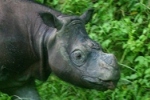
(10/26/2010) A fifth of the world’s vertebrate species (i.e. mammals, birds, reptiles, amphibians, and fish) are threatened with extinction, according to a massive new study by the International Union for the Conservation of Nature (IUCN); and the situation is worsening for the world’s wildlife: on average 52 species of mammals, birds, and amphibians move one category closer to extinction every year (the IUCN Red List categorizes species as Least Concern, Near Threatened, Vulnerable, Endangered, Critically Endangered, Extinct in the Wild, and then Extinct). However, the news isn’t all bad. The study found that conservation action does work: in the first analysis of its kind, researchers found that the global biodiversity decline would have been 18% worse if not for conservation attention, “nonetheless,” the authors—174 scientists from 38 countries—write, “current conservation efforts remain insufficient to offset the main drivers of biodiversity loss.” According to the study, these drivers include agricultural expansion, logging, over-exploitation of species, and invasive species.
Environmentalists must recognize ‘biases and delusions’ to succeed
(10/18/2010) As nations from around the world meet at the Convention on Biological Diversity in Nagoya, Japan to discuss ways to stem the loss of biodiversity worldwide, two prominent researchers argue that conservationists need to consider paradigm shifts if biodiversity is to be preserved, especially in developing countries. Writing in the journal Biotropica, Douglas Sheil and Erik Meijaard argue that some of conservationists’ most deeply held beliefs are actually hurting the cause.
Losing nature’s medicine cabinet

(10/04/2010) In all the discussions of saving the world’s biodiversity from extinction, one point is often and surprisingly forgotten: the importance of the world’s species in providing humankind with a multitude of life-saving medicines so far, as well as the certainty that more vital medications are out there if only we save the unheralded animals and plants that contain cures unknown. Already, species have provided humankind everything from quinine to aspirin, from morphine to numerous cancer and HIV-fighting drugs. “As the ethnobotanist Dr. Mark Plotkin commented, the history of medicine can be written in terms of its reliance on and utilization of natural products,” physician Christopher Herndon told mongabay.com. Herndon is co-author of a recent paper in the journal Biotropica, which calls for policy-makers and the public to recognize how biodiversity underpins not only ecosystems, but medicine.
Mass extinction fears widen: 22 percent of world’s plants endangered
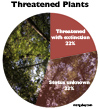
(09/28/2010) Scientific warnings that the world is in the midst of a mass extinction were bolstered today by the release of a new study that shows just over a fifth of the world’s known plants are threatened with extinction—levels comparable to the Earth’s mammals and greater than birds. Conducted by the Royal Botanic Gardens, Kew; the Natural History Museum, London; and the International Union for the Conservation of Nature (IUCN), the study is the first time researchers have outlined the full threat level to the world’s plant species. In order to estimate overall threat levels, researchers created a Sampled Red List Index for Plants, analyzing 7,000 representative species, including both common and rare plants.
21% of Africa’s freshwater plants and animals threatened
(09/02/2010) 21 percent of African freshwater plant and animal species are threatened with extinction, according to a five year assessment of 5,167 freshwater species by 200 scientists.
30 frog species, including 5 unknown to science, killed off by amphibian plague in Panama
(07/19/2010) With advanced genetic techniques, researchers have drawn a picture of just how devastating the currently extinction crisis for the world’s amphibians has become in a new study published in the Proceedings of the Nation Academy of Sciences (PNAS). Studying frog populations using DNA barcoding in Panama’s Omar Torrijos National Park located in El Copé researchers found that 25 known species and 5 unknown species have vanished since 1998. None have returned.
‘No hope now remains’ for the Alaotra grebe
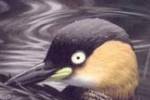
(05/31/2010) World governments have missed their goal of stemming biodiversity loss by this year, instead biodiversity loss has worsened according to scientists and policy-makers, and a little rusty-colored bird, the Alaotra grebe (Tachybaptus rufolavatus) is perhaps a victim of this failure to prioritize biodiversity conservation. Native to a small region in Madagascar, the grebe has been declared extinct by BirdLife International and the IUCN Red List due to several factors including the introduction of invasive carnivorous fish and the use of nylon gill-nets by local fishermen, which now cover much of the bird’s habitat, and are thought to have drowned diving grebes. The bird was also poached for food.